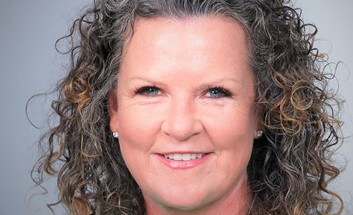BLOG VIEW: More companies are directing time and resources to create equity in housing and homeownership. As part of that effort, one must understand why housing is inequitable today.
There seems to be universal agreement in the mortgage and housing industries that education is key. However, it is important to note that the need for education is not just for minorities who have yet to achieve – or even imagine – the dream of homeownership. Education also is critical for those unaware of the barriers that still exist for many across the country.
For example, many mortgage industry professionals may be unaware that the minority homeownership gap today is no better than it was when discrimination was legal. As we all become more informed, we will be better equipped to make positive change in the industry.
It’s not enough to end overt discrimination in the industry, we also must shed light on and address the other obstacles. Let’s look at some of the challenges facing minorities in the housing industry – and how the industry can address those obstacles to better serve underrepresented borrowers.
Education
The biggest challenge often faced by historically marginalized groups is a lack of financial education. The degrees of financial literacy vary widely from community to community – and even from person to person. The borrower’s background has much to do with their level of financial literacy and, more specifically, how well they understand the mortgage and home buying process.
For example, some households may have no experience with homeownership. And though most may not consciously think about the fact that they grew up in a house their parents owned, it certainly affects their perception of the attainability of homeownership.
According to 2019 Census data, 58% of Black American households are rented and 53% of Latino households are rented, while less than 31% of white households are rented. Financial literacy, especially with regard to homeownership, tends to be passed down generationally. And, with so many families lacking that homeownership experience or knowledge, it creates a cycle where homeownership may seem unattainable.
As another example, 12% of Latino households do not have bank accounts, according to CNBC. Some families may come from a country where the banking system was corrupt or untrustworthy, while others may be facing a language barrier that makes it difficult to form a banking relationship. These people are still working and paying bills – including housing. However, without a bank account, they typically don’t have what is required for underwriting a mortgage.
Clearly, education is part of the solution and the sooner it begins, the better. The industry must find ways to educate everyone about the benefits of homeownership and what it takes to buy a home. Whether it be in school, college, or at the beginning of their home buying journey, education is a key element of making homeownership more accessible and attainable for everyone.
Financial education can help potential homeowners prepare for homeownership not only with skills directly correlating to the home buying process, but also with skills like building credit or savings.
Keeping education going once the home has been purchased is important, too. It’s important to find ways to educate borrowers post-close about how to stay in their home. The homeownership journey does not end with closing – and providing continued education can help prepare borrowers for all the decisions and events they will face as homeowners.
Credit Scores
In the same vein, many historically marginalized groups have thin credit or no credit history at all. While better financial education can help with this, there is something else the industry can do: There is an opportunity to shift the way we view credit and use other important data to decide the borrower’s ability to make payments.
Utility and rent payments are gaining acceptance as a way to demonstrate the borrower’s ability to make payments, despite their credit history or lack thereof. With the U.S. Department of Housing and Urban Development’s decision that special purpose credit programs (SPCPs) are permissible under the Fair Housing Act, lenders also may choose to make more use of these programs to address the minority homeownership gap. While it must be done safely and sustainably, giving minority borrowers a chance at homeownership can help them build credit and, ultimately, wealth.
Income
Another challenge many underserved groups face with home buying goes back to income. Many individuals may have multiple streams of income such as working in a restaurant, driving for a ride sharing service, or doing contract work. A 2021 Pew Research study showed that 30% of Latino adults have earned money via the gig economy, compared to 20% of Black adults, 19% of Asian adults, and 12% of white adults.
The mortgage industry must be better prepared and equipped to work with borrowers that come with multiple income streams, not a simple W2. The industry is making progress, but opportunities remain to expand and improve.
This is by no means an exhaustive list, but only a few of the major and most common challenges some disadvantaged groups face when pursuing homeownership. By understanding these challenges – and helping prospective borrowers understand them, too – the mortgage industry can set a path toward attainable and sustainable homeownership for all.
Colleen Kennedy is vice president, strategic account manager at Enact (formerly Genworth Mortgage Insurance).











